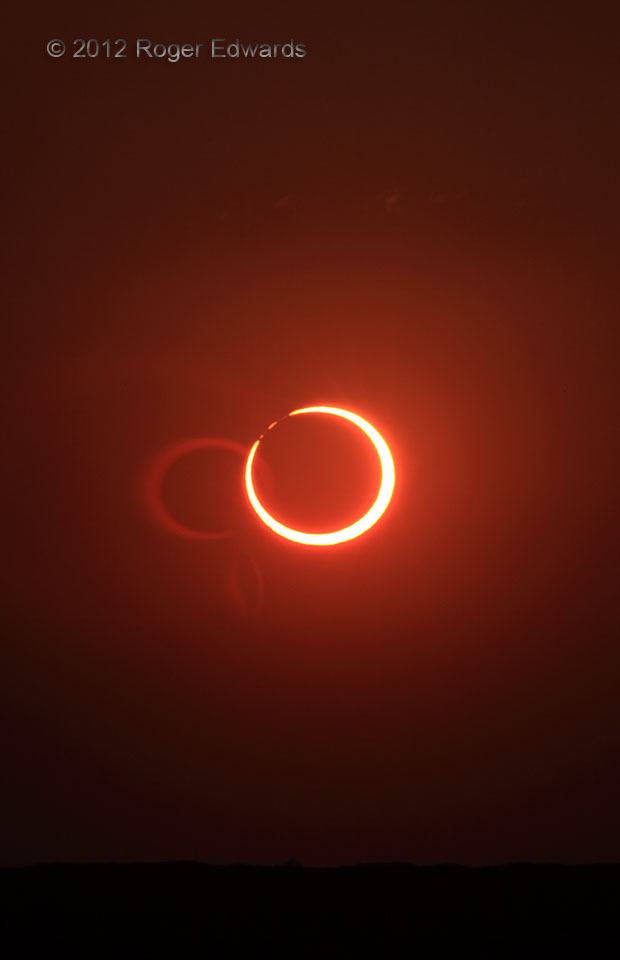On the other side of an annular eclipse from the first crescent sun, the visual edges of the lunar and solar discs became juxtaposed, rendering a beaded edge for just a few seconds. This phenomenon, which also shows up during total solar eclipses, is known as Baily’s beads after its 1836 documentation by Francis Baily. The rough terrain of the moon differentially blocks sunlight, breaking up the light’s passage along the curving lunar horizon and onward to us. Gaps quickly close or open (time lapse), depending on whether the beads are seen on the way in or out of the peak eclipse.
6 NNW Bledsoe TX (20 May 12) Looking WNW
33.7010, -103.0389
